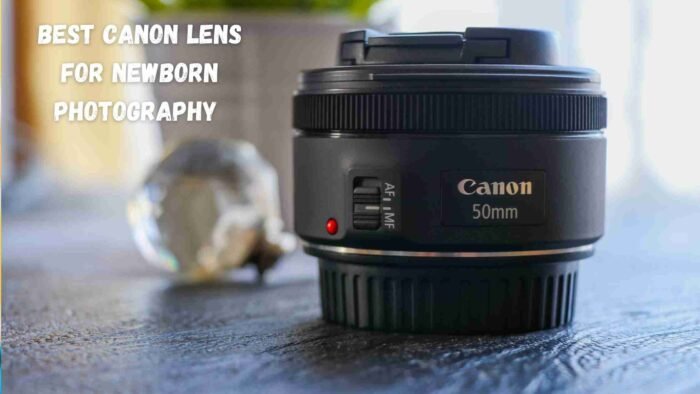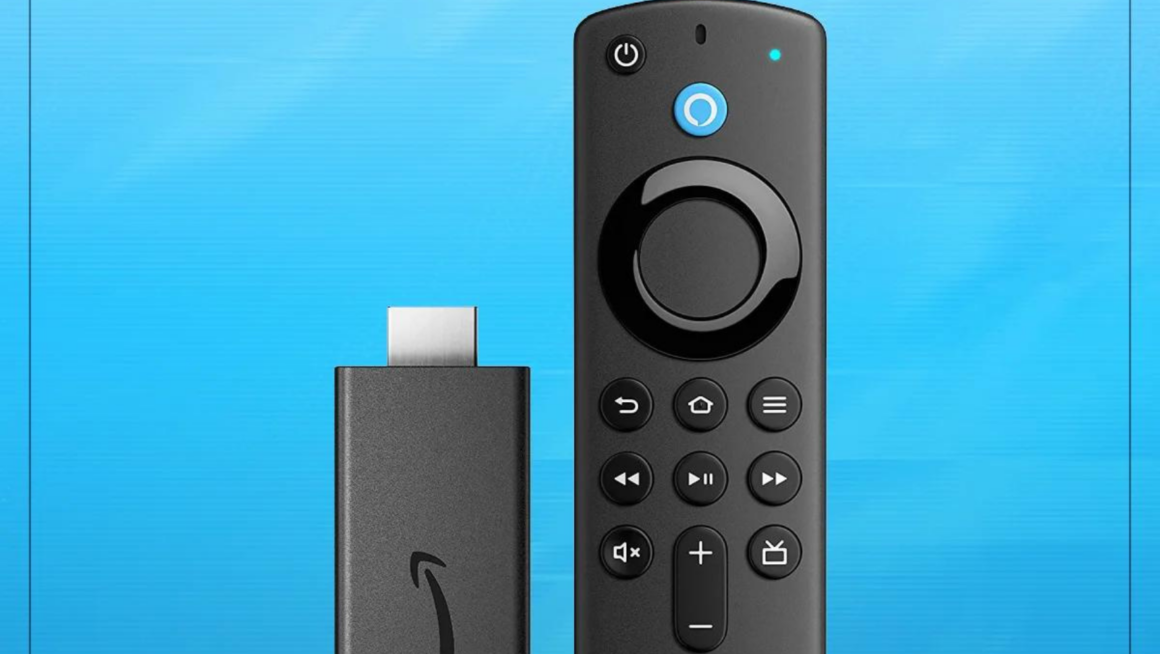As you prepare for your baby’s arrival, it is important to start thinking about the gear that will be necessary. This includes choosing a camera lens that best suits your needs. Here are five of the most popular choices out there today!
As your newborn grows up, you’ll find out that there are a lot of things to take care of. Whether it’s getting them dressed every day or making sure they’re healthy and happy, one thing is for certain – photographs will be taken. These photos are meant to serve as memories from the beginning stages in life, but sometimes parents can go overboard with their photo sessions which may end up costing more than expected or cause unnecessary stress on the family at large. Here are 5 lenses that could help cut down on these costs if you consider purchasing some for yourself too!
The “best camera for newborn photography 2020” is a question that is asked often. There are many cameras on the market, but these 5 are some of the best Canon lenses to buy in 2021.
It’s unexpected that newborn photography is becoming more popular. Photographing infants is more personal, intimate, and aesthetically satisfying than commercial tasks. Furthermore, it enables you to be a part of capturing a very significant moment in the life of the parents (and, of course, the baby!).
The lens used in newborn photography is crucial, not only because of the amount of detail necessary, but also because of the clarity with which the essence of this small new person is recorded. You could be looking for the finest Canon lens for newborn photos if you have a Canon camera. Maybe you’re new to baby photography or wish to improve your skills. You’ve come to the correct location. Here are our top five recommendations.
Reviews of the Best Canon Lenses for Newborn Photography in 2021
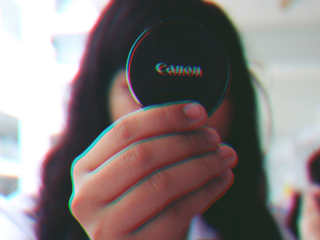 One of the most rewarding jobs a photographer can do is photographing infants with their parents. Here are some of the greatest lenses to aid you on your way.
One of the most rewarding jobs a photographer can do is photographing infants with their parents. Here are some of the greatest lenses to aid you on your way.
1. EF 50mm f/1.2 L USM Lens from Canon
👍 Pros
- It is appropriate for various outdoor applications because to its strong weather-resistant lens design.
- For shooting convenience, it has autofocus and full-time manual focus.
- A wide aperture of f/1.2 is good for low-light photography.
- Flare and ghosting are automatically reduced.
- For macro newborn photos, a shallow depth of focus and background blur are ideal.
👎 Cons
- At apertures less than f/2, images may seem dull.
Our top selection is one of the most popular among newborn and maternity photographers, especially those who specialize in macro newborn photography. Additionally, if you’re regularly tasked with photographing bundles of joy in low-lighting situations, this is the best option.
First and foremost, this camera boasts an f/1.2 aperture. In fact, of all Canon lenses now on the market, this lens has the widest aperture. As a result, you’ll have a lot more light to work with and a quicker shutter speed. When shooting more active infants who have already started crawling, this is really handy.
This camera’s technological qualities also set it apart. It’s equipped with a ring-style ultrasonic motor (USM), which enables for efficient and quick focusing (both manual and auto). Furthermore, this lens is built and coated in such a way that flare and ghosting are automatically reduced. You’ll also get a shallower depth of focus and the beautiful background blur that so many baby photographers lust over.
It’s worth noting, however, that zooming isn’t a possibility with this lens. This might be an issue, especially if you want to make very creative photos. Basically, this 50mm lens will catch what’s directly in front of you nicely, but don’t expect it to do all the work for you.
2. Canon EF 85mm f1.2L II USM Lens (Canon EF 85mm f1.2L II USM Lens)
👍 Pros
- A built-in ultrasonic motor (USM) enables for more efficient and quicker focusing.
- It’s perfect for landscape and portrait photography, as well as newborn photos.
- With a high-speed focusing feature and a circular aperture that is smooth
- For efficient photo-taking, a medium telephoto lens with an EF mount is available.
👎 Cons
- Your camera will gain a significant amount of weight as a result of the lens.
Are you looking for a portrait lens that can help you with your newborn pictures without breaking the bank? It’s possible that the Canon 85mm f/1.2 lens is the one for you. It’s also well-suited to those of you who work with full-frame cameras. Let’s have a look at why this lens is regarded as one of the finest for newborn photography.
This 85mm lens, with an aperture of f/1.2, is often used by wildlife photographers because of the clarity it gives for the subject. That is also why it is so popular among wedding and other event photographers. This is a terrific alternative if you’re working on a project for a family picture rather than just the infant.
The bundled filters, like as the polarizer and UV filter, are also a huge hit with us (which come with their own cases). Meanwhile, the ultrasonic motor allows you to concentrate on your subject considerably faster, making it ideal for spontaneous shots of the family or even the infant if she has started crawling.
3. Macro Canon EF 100mm f/2.8L IS USM
👍 Pros
- Ideal for creating bokeh effects with ease.
- For the best portrait photography, it’s equipped with ultra-low dispersion characteristics.
- For your convenience, it does not need an adapter to function.
- The built-in ultrasonic motor aids in rapid and easy focus.
- The ideal option for baby picture photos with a creative bent.
👎 Cons
- Outdoor or big family shootings are not recommended.
The next item on our list is a Canon macro lens that is really popular. It’s a 100mm lens with an f/2.8 maximum aperture this time. If you’re a seasoned newborn photographer looking to take your art to new heights, we’d venture to say you’ve discovered the perfect lens to do it. Here are the reasons why we believe this is the greatest Canon lens for newborn photography.
The structure of this camera lens is small and light, belying its actual capability. This lens is equipped with an open aperture that enables you to catch every detail while exercising your creative freedom. It is designed to provide consistent sharpness and smoothness from one end of the shot to the other. This is due in large part to the lens’s built-in optical stabilizer, which is among the greatest available for any camera lens.
Furthermore, the lens’ design minimizes chromatic aberrations and aids in the creation of stunning creamy bokeh effects. This lens for birth photography has a full-time manual focus option, as usual, but you can rely on the USM for quick and accurate autofocusing as well. Furthermore, this is one of Canon’s quietest lenses to date. As a result, it is one of the finest lenses for infant photography.
EF 24-105mm f/4 L IS USM Lens (Canon)
👍 Pros
- Super UD glass and aspherical lenses decrease chromatic distortion and aberration.
- The ring ultrasonic motor allows for rapid autofocusing while producing minimum noise.
- A built-in image stabilizer reduces camera shake by up to three stops.
- Moisture and dust resistant; great for baby photography in the outdoors
- A popular general-purpose lens with a broad range of uses.
- Can create photos that are very crisp
👎 Cons
- Due to unreliable vendors, several customers got a faulty unit.
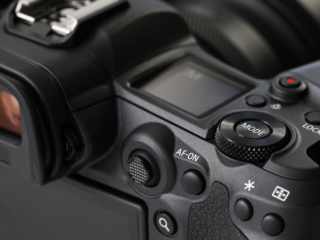 For many of you, baby photography is only one facet of your creative work as a photographer. So, if you’re looking for a general-purpose lens that can also be used for baby or family photos, this multi-focal length lens is the way to go.
For many of you, baby photography is only one facet of your creative work as a photographer. So, if you’re looking for a general-purpose lens that can also be used for baby or family photos, this multi-focal length lens is the way to go.
If you’re using a full-frame camera, you’ll appreciate the broad field of view provided by this lens. As a result, it’s fantastic for shooting big families with a baby, or numerous infants at the same time (let’s assume you’ve been entrusted with photographing twins, triplets, or quadruplets!). On that topic, the ring ultrasonic motor included into this lens is also useful for speedy focusing.
We can’t deny our admiration for this lens’s excellent construction quality. Handling this lens is a delight in and of itself, thanks to the smooth focus and zoom rings. Furthermore, the barrel of this lens for kid photography does not spin or stretch when the focus is raised. This makes employing rotation-dependent filters a lot simpler.
5. Canon EF 35mm f/2 IS USM Wide-Angle Lens (EF 35mm f/2 IS USM)
👍 Pros
- Image stabilization (up to 4 stops) is built-in.
- Ideal for full-frame cameras and capable of capturing crisp shots
- For simple handling, a lightweight but strong structure is used.
- With a USM focus adjustment, it has an effective rear focusing mechanism.
- Ideal for newborn photographs.
- For infant photographs, it provides edge-to-edge crispness.
👎 Cons
- We couldn’t think of any disadvantages to this lens.
If you work as a newborn photographer in a client’s house rather than a studio, you’ll most likely be working near natural light sources, such as a window. When photographing your newly hatched subject, the f/2 aperture of this 35mm Canon lens will help you achieve a balanced optical quality.
Canon’s iconic wide-angle pick is this flexible and high-performing but lightweight lens. It has a GMo aspherical lens element, which offers incredible picture quality. When photographing a sleeping infant, the full-time manual focus override and in-built picture stabilization will come in handy. Not only that, but if you like photography in nature, you’ll appreciate having this lens on hand.
However, if you want to photograph your subject from a larger distance, this lens may be difficult to use. Overall, considering the degree of clarity provided by the f/2 aperture, it’s no wonder that this 35mm lens is one of the most extensively used by newborn photographers all over the world. So, if you’re seeking for a model for great baby close-up photographs, this is the one to acquire.
Consider These Factors Before Purchasing a Canon Lens for Newborn Photography
Are you stumped as to where to begin your search for a new Canon lens for baby photography? We’ve been in that situation previously. However, we believe that the important characteristics listed below, such as lens selection, wide angle, quiet wave motor, universal lens, and lens type, will help you pick the ideal lens for infants.
Lens Type
It’s vital to remember that there isn’t a single optimal lens for baby photography. Not only does it differ from one photographer to the next, but it also relies on the customers’ desired shooting style. Most newborn photographers advocate having a primary lens (typically 50mm), a macro lens, a wide-angle lens, and a portrait lens.
Here’s how it works: the portrait lens enables you to photograph both the infant and their parents. Both interior and outdoor pictures benefit from the wide-angle lens. The finer features, such as the baby’s eyelashes, lips, and fingers, may be captured using a macro lens. Of course, the prime lens is your best bet, especially in low-light situations. 50mm, 85mm, and 35mm are the three most common prime lenses for newborn photography.
Choosing a Macro Lens
Now that we’ve covered the basic lens types needed for newborn photography, let’s take a closer look at macro lenses, which enable you to capture clear, small details—a must for shooting infants. The best macro lens for newborn pictures will enable you to show the infant in a more lifelike manner.
Begin by determining the focal length. A larger focal length is ideal for newborn macro photography since it allows you to operate at a greater distance. It’s worth remembering, though, that a longer focal length translates to a narrower depth of focus.
On that said, a lower focal length will still enable you to get comparable magnification levels while costing less. It’s worth mentioning, though, that the wide-angle viewpoint of a short macro focal length may not be ideal for capturing an intimate feel in newborn images. In the end, it’s up to you to determine whether or not it aligns with your creative goals.
Sensor for Crops
Is your camera equipped with a crop sensor? If you’re utilizing prime lenses, this is a significant consideration. This is due to the fact that utilizing a prime lens of 50mm or 85mm on a full-frame camera is significantly simpler. However, when using a crop sensor camera, 35mm is frequently the sweet spot.
Shooting in the Dark
The amount of room you have to move about is a crucial issue for any photographic session. The sort of lens you should use will be determined by this. When dealing with a lot of space, for example, an 85mm prime lens (or something similar) will provide excellent results. A 35mm or 50mm would be ideal for smaller settings, such as the customers’ house. Make sure the minimum focus distance is something you want before you buy. If you’re starting a newborn photography company, it’s critical to get this part right.
Distortion of the Lens
Lens distortion, which may occur while photographing up-close subjects, is something we’re all familiar with and fear. If you’re going to be shooting a lot of close-ups of the newborn, we suggest a 50mm or 85mm lens instead of a 35mm. Otherwise, you risk having the baby’s characteristics portrayed in an unbalanced manner (usually too large).
Photographing a Newborn
If you’re new to newborn photography or still learning the ropes, the following pointers may help you have a successful and satisfying session.
Getting started
Because newborns need to be fed, put to bed, or changed regularly, most newborn photography sessions are done on a tight schedule. As a result, it’s critical to set up first before bringing the kid in on time. If you’re having difficulties figuring out your lighting or camera settings, enlist the aid of a toy baby. You may view some excellent tutorials on YouTube about newborn photography camera settings to ensure that everything is in order.
Make sure your camera and lens are in good working order.
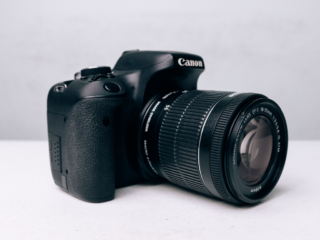 It’s critical to find the right lens and camera. To capture sharper baby images, make sure you use a camera that can eliminate chromatic aberration. Also, if you have a Canon EOS camera, you must be cautious while selecting a lens since the correct model is critical for optimal performance. Macro photos, quiet wave motor, narrow depth, gorgeous background blur effects, and a quick maximum aperture are also vital for professional photography and will make your newborn session go smoothly. Also, see whether the lens has a glare-reducing super integrated coating.
It’s critical to find the right lens and camera. To capture sharper baby images, make sure you use a camera that can eliminate chromatic aberration. Also, if you have a Canon EOS camera, you must be cautious while selecting a lens since the correct model is critical for optimal performance. Macro photos, quiet wave motor, narrow depth, gorgeous background blur effects, and a quick maximum aperture are also vital for professional photography and will make your newborn session go smoothly. Also, see whether the lens has a glare-reducing super integrated coating.
Direction in the arts
One of the most enjoyable aspects of a newborn photography is the opportunity to experiment with various themes, emotions, and tones. Collaborate with the parents to choose the correct accessories, toys, blankets, and other items to create the ideal atmosphere for this brand new person’s first professional photos!
Lighting
Natural light is the ideal option for newborn photos since it is sufficiently mild while still being naturally pleasing. As a result, you may play with light and shadow by directing the light in a sideways position. If you’re having trouble adjusting the contrast, using a reflector to bounce the light is also a smart alternative.
Canon Lens Frequently Asked Questions
1. What does the focal length of a lens imply?
When the subject is in focus, the focal length displays the distance between the image sensor and the lens in millimeters (mm). The closer the subject is to the camera, the longer the focus length. Shorter focal lengths provide a wider field of vision, which is ideal for capturing sports. It’s much great if you can utilize a motorized camera slider with it. Taking close-up photographs of sleeping newborns requires a thorough understanding of the subject. This understanding will also assist you in creating stunning bokeh.
2. How can I figure out what focal length is best for me?
It all depends on how much of the scene you want to show. Finding the appropriate focal length, on the other hand, requires a lot of trial and error. This tutorial is useful for getting a better knowledge of how to choose the proper lens.
3. Is it preferable to shoot newborns with a prime lens or a zoom lens?
We recommend using a prime lens for shooting a crawling infant since they are fast-moving subjects and zoom lenses take a long time to focus. Furthermore, when it comes to zoom lenses, you’re restricted in terms of aperture; yet, they’re beneficial for capturing an actual baby.
4. What is the optimum lens focal length for newborn photos in the outdoors?
A 135mm lens is a versatile option. It would also be fantastic if the lens had an ultra-wide aperture and an aspherical element to provide stunning bokeh.
5. Can camera flashes hurt infants?
Some people feel that a camera’s flash might harm a child’s vision. Fortunately, this has been disproven in recent years, so go ahead and flash!
Final Thoughts
In the end, only you can determine which Canon lens is perfect for newborn photography, based on your studio, client demands, and creative vision. That said, we’d be dishonest if we didn’t mention how much we love the Canon EF 100mm f/2.8L IS USM Macro Lens – it’s a lens that you can’t go wrong with. We wish you all the best!
Related
The “best lens for newborn photography” is a question that has been asked before. The 5 best lenses for newborn photography are the Sigma 18-35 mm f/1.8, Canon EF 50 mm f/1.4 USM, Tamron SP 70-200 mm f/2.8 Di VC USD G2, Nikon AF-S DX NIKKOR 18-300 mm F3.5-6.3G ED VR and Nikon AF-S DX NIKKOR 16-85 mm F3.5-4.5G ED VR II lenses.
Related Tags
- best lens for baby photography nikon
- best canon lens for baby photography
- best lens for baby photography sony
- best fuji lens for newborn photography
- best lens for child photography

